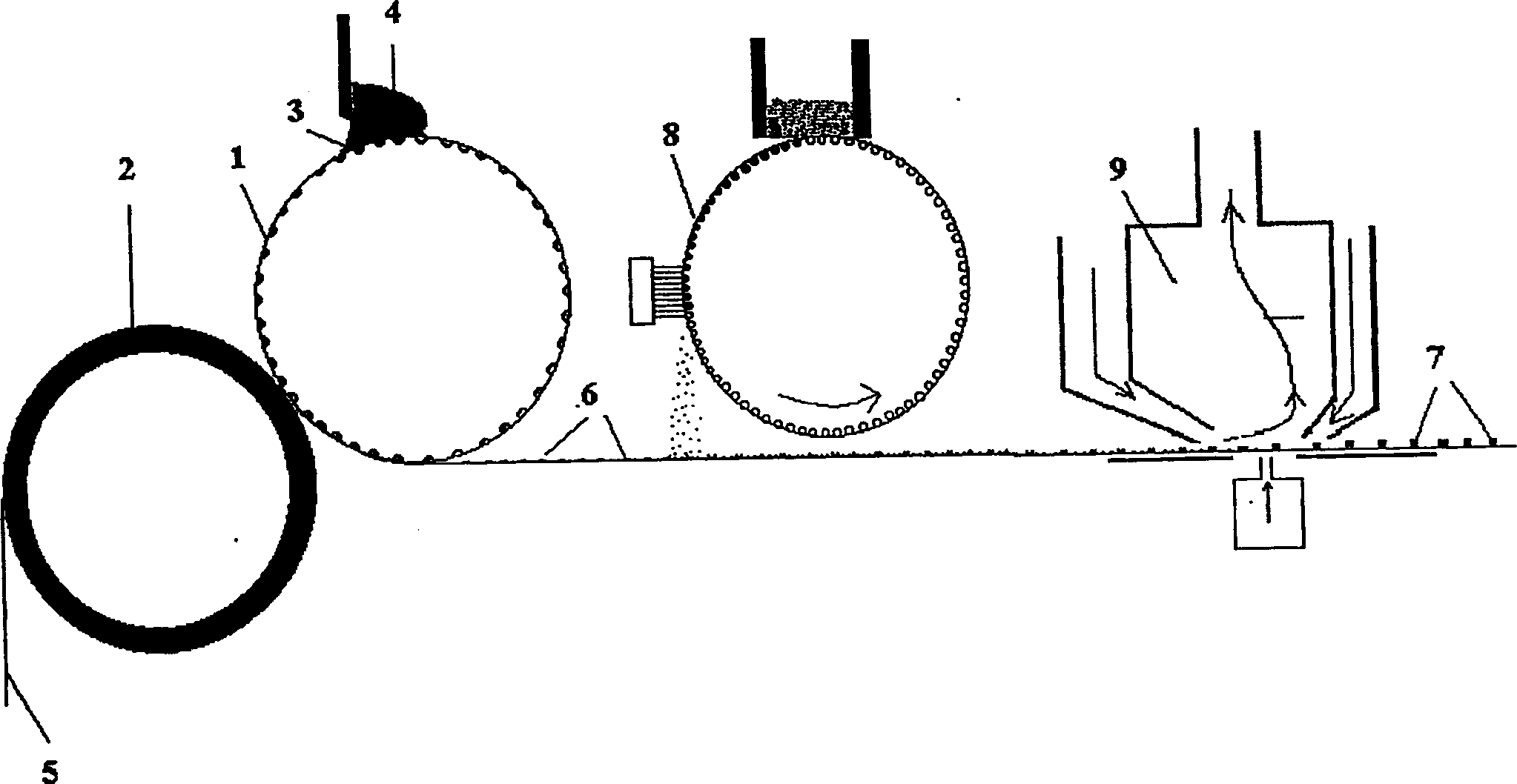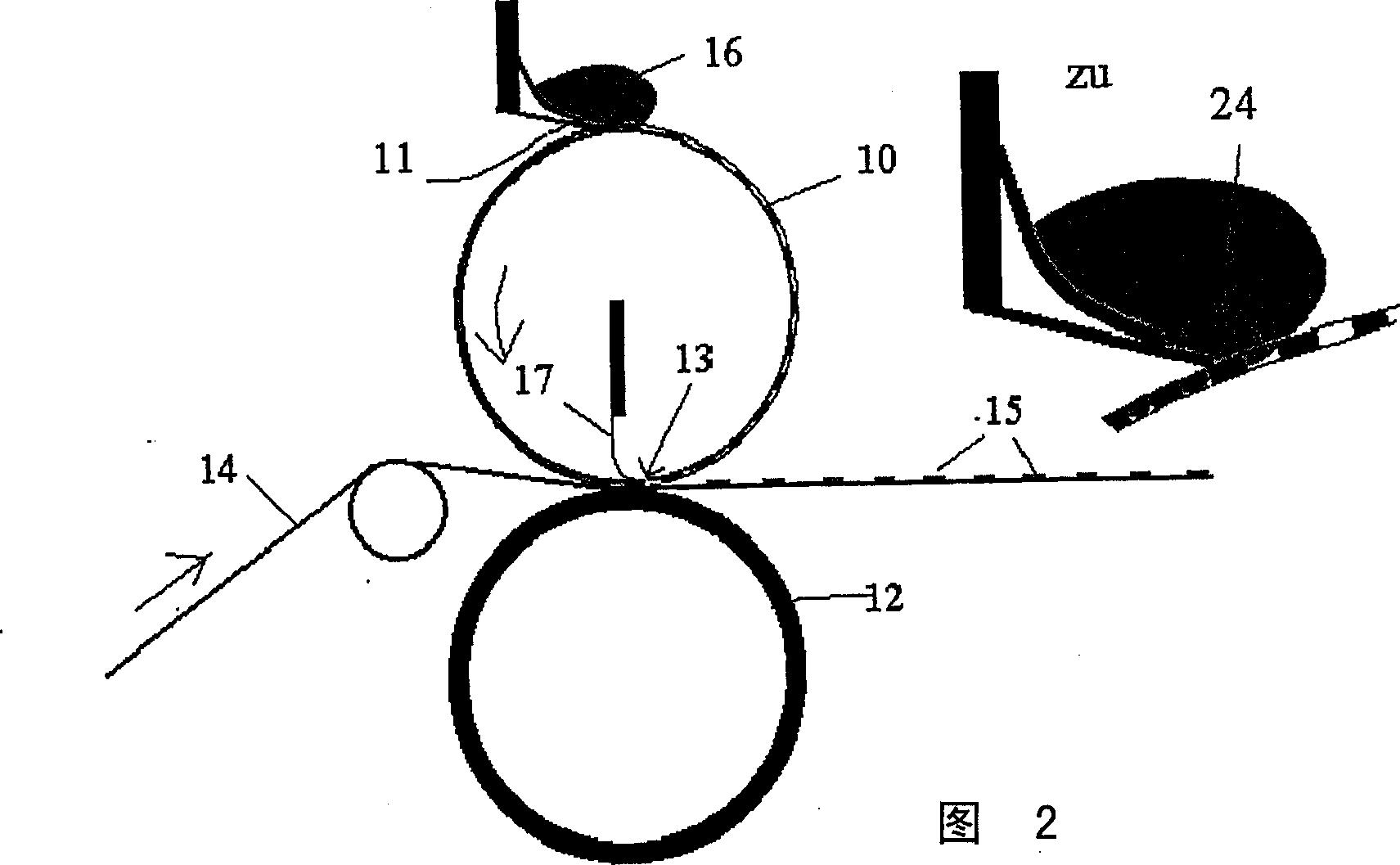Method and equipment for producing flexible cloth possessing hot melt adhesive coating layer applied by wire mesh
A technology of hot-melt adhesives and fabrics, applied in adhesives, film/sheet adhesives, printing of special varieties of printed matter, etc., can solve problems such as impossible to obtain a clean screen, excessive tension, etc.
- Summary
- Abstract
- Description
- Claims
- Application Information
AI Technical Summary
Problems solved by technology
Method used
Image
Examples
example 1
[0021] Embossing rolls and rubberized back rolls
[0022] - all cooled
[0023] - Embossed groove density: 80 / cm 2
[0024] —Embossed groove depth: 0.27mm
[0025] - Embossing depth: 0.18mm
[0026] Slurry composition
[0027] -PVC plus plasticizer 1:1:10%
[0028] - dry residue, cross-linked polymethacrylate 3.5%
[0029] - dry residue, additive 1%
[0030] - dry residue, thickener 2%
[0031] - excess water
[0032] Slurry viscosity: 15000-25000cP
[0033] Hot melt adhesive powder: low melting copolyamide powder 80-160 m
[0034] Coated substrate: Braid 25g / m with textured polyester yarn 2
[0035] Coating weight: total weight 5.0g / m 2 , of which the protective layer is about 1g / m 2, hot melt adhesive about 4.0g / m 2
[0036] Coating error: + / -0.5g / m 2 (Sample 100cm 2 )
[0037] Adhesive strength (under the conditions of continuous material handling pressure, 127°C, set gap, polyester pullover outer material): better than 13N / 5cm
example 2
[0039] Bottom screen stencil, 150° obtuse external doctor blade and rubberized back roller
[0040] —Stencil hole density: 80 / cm 2
[0041] - Hole diameter: 0.30mm
[0042] - Wall thickness of bottom wire mesh: 0.19mm
[0043] - perforation drain of pores in continuous operation: about 60% of total pore volume (volume = pore cross-sectional area * Wall thickness of bottom wire mesh)
[0044] Slurry composition: same as above
[0045] Slurry viscosity: same as above
[0046] Coating error: same as above
[0047] Hot melt adhesive powder: same as above
[0048] Coated substrate: same as above
[0049] Coating weight: same as above
[0050] Adhesive strength: same as above
PUM
| Property | Measurement | Unit |
|---|---|---|
| Diameter | aaaaa | aaaaa |
| Wall thickness | aaaaa | aaaaa |
Abstract
Description
Claims
Application Information
 Login to View More
Login to View More - R&D
- Intellectual Property
- Life Sciences
- Materials
- Tech Scout
- Unparalleled Data Quality
- Higher Quality Content
- 60% Fewer Hallucinations
Browse by: Latest US Patents, China's latest patents, Technical Efficacy Thesaurus, Application Domain, Technology Topic, Popular Technical Reports.
© 2025 PatSnap. All rights reserved.Legal|Privacy policy|Modern Slavery Act Transparency Statement|Sitemap|About US| Contact US: help@patsnap.com



